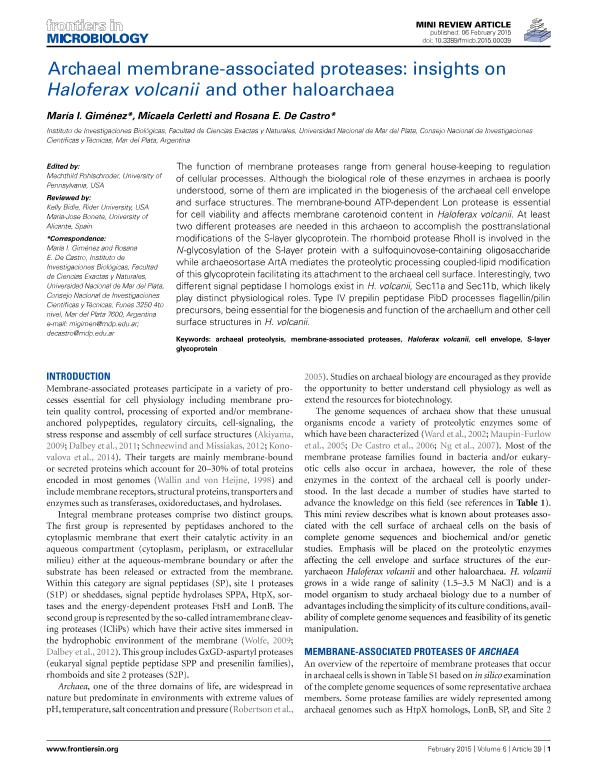Artículo
Archaeal membrane-associated proteases: insights on Haloferax volcanii and other haloarchaea
Fecha de publicación:
02/2015
Editorial:
Frontiers
Revista:
Frontiers in Microbiology
ISSN:
1664-302X
Idioma:
Inglés
Tipo de recurso:
Artículo publicado
Clasificación temática:
Resumen
The function of membrane proteases range from general house-keeping to regulation of cellular processes. Although the biological role of these enzymes in archaea is poorly understood, some of them are implicated in the biogenesis of the archaeal cell envelope and surface structures. The membrane-bound ATP-dependent Lon protease is essential for cell viability and affects membrane carotenoid content in Haloferax volcanii. At least two different proteases are needed in this archaeon to accomplish the posttranslational modifications of the S-layer glycoprotein. The rhomboid protease RhoII is involved in the N-glycosylation of the S-layer protein with a sulfoquinovose-containing oligosaccharide while archaeosortase ArtA mediates the proteolytic processing coupled-lipid modification of this glycoprotein facilitating its attachment to the archaeal cell surface. Interestingly, two different signal peptidase I homologs exist in H. volcanii, Sec11a and Sec11b, which likely play distinct physiological roles. Type IV prepilin peptidase PibD processes flagellin/pilin precursors, being essential for the biogenesis and function of the archaellum and other cell surface structures in H. volcanii.
Archivos asociados
Licencia
Identificadores
Colecciones
Articulos(IIB)
Articulos de INSTITUTO DE INVESTIGACIONES BIOLOGICAS
Articulos de INSTITUTO DE INVESTIGACIONES BIOLOGICAS
Citación
Gimenez, Maria Ines; Cerletti, Micaela; de Castro, Rosana Esther; Archaeal membrane-associated proteases: insights on Haloferax volcanii and other haloarchaea; Frontiers; Frontiers in Microbiology; 6; 39; 2-2015; 1-9
Compartir
Altmétricas




